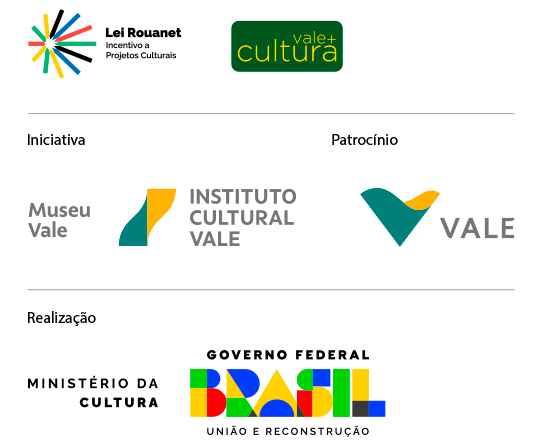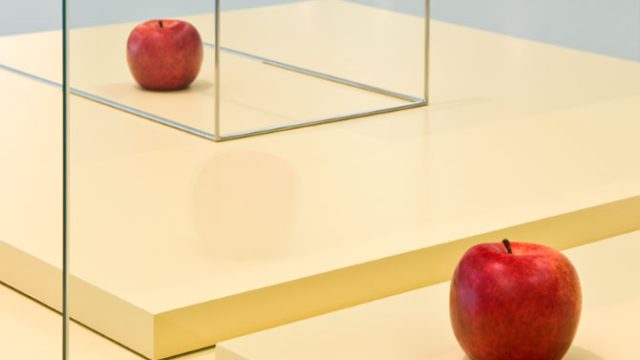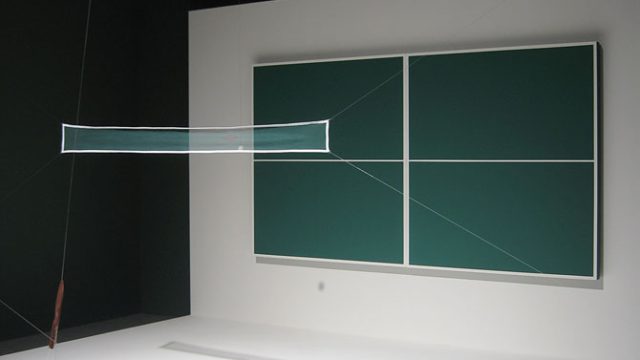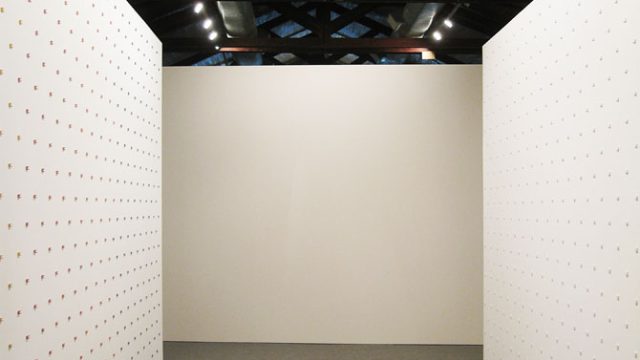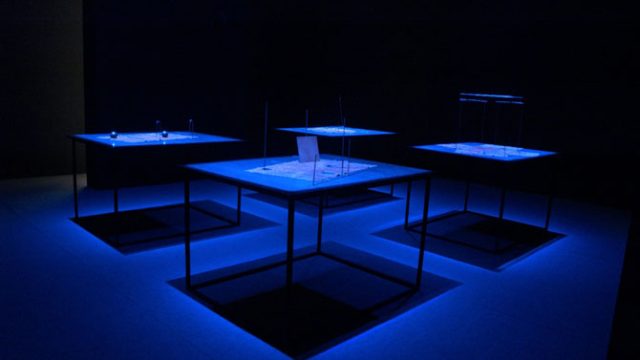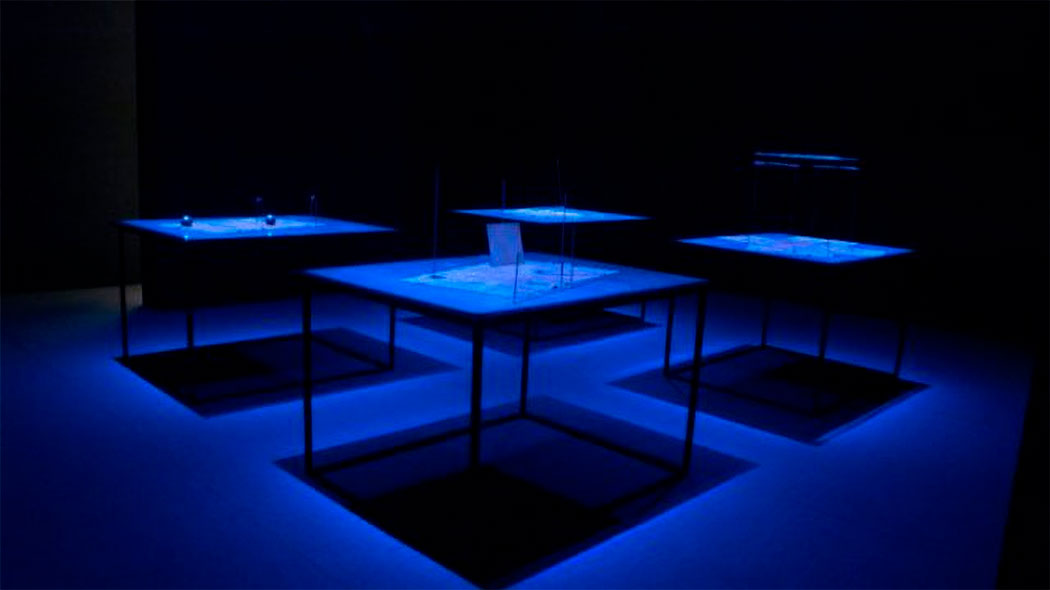
It is with great pleasure that the Vale Foundation and the Vale Museum, on their 11th anniversary, present the work of the artist Waltercio Caldas. A native of Rio de Janeiro, Waltercio is considered one of the most internationally renowned Brazilian artists, having exhibited in acclaimed institutions in various countries. In Brazil, he participated as a guest in editions of the São Paulo Biennials in 1983, 1987, and 1996 and represented the country at the Venice Biennale in 1997.
His works are in the collections of major museums worldwide, such as the MoMA in New York or the Neue Galerie in Kassel, as well as Brazilian museums like the Museum of Modern Art in São Paulo and Rio de Janeiro. His sculptures in public spaces can be seen in Leirfjord (Norway), Paseo de las Américas in Punta del Este (Uruguay), or on Avenida Beira-Mar in Rio de Janeiro. In 2007, he created an environment called Half Mirror Sharp, specifically for the 52nd International Art Biennale in Venice, now part of the exclusive exhibition “Salas e Abismos”. In 2008, the Calouste Gulbenkian Foundation in Portugal and the Centro Galego de Arte Contemporáneo in Spain presented two important shows by the artist.
Salas e Abismos brings together for the first time nine installations, or environments as Waltercio prefers to describe them, in the same space, creating a new perspective of his work through a unique universe. Not being a retrospective – there is an unprecedented room, Silêncio do Mundo, specially conceived for the exhibition – this selection of the artist’s works has a characteristic: the specific desire to make the works relate to each other, dialogue with the space, create their own tension and unity. The works were developed throughout the artist’s career, designed to occupy specific places, where space is treated with emphasis on each of them. Hence the designation of “environments” for the works, which are exhibited together for the first time. Waltercio’s selection considers the museum exhibition space as a language, proposes new and surprising places for the gaze, and once again presents the poetic principles of the artist’s work.
The opportunity to discover new paths, as well as the possibility of a new beginning – characteristics inherent in Waltercio’s work and, more specifically, in the conception of this exhibition – resonate with the actions of the Vale Foundation. The foundation works in collaboration with social actors, developing programs and projects that strengthen human capital and local cultural identities. One action reverberates in the other and unfolds into new possibilities of perceiving space for those who enjoy it, as individuals, citizens, and a collective. With this exhibition, the Vale Foundation confirms its conviction in art and its role through culture as a valuable means of universal expression.
Vale Foundation
Artist
Waltercio Caldas was born in 1946 in Rio de Janeiro. He was a student of the artist Ivan Serpa and held his first solo exhibition at the MAM in Rio de Janeiro in 1973, considered the Exhibition of the Year by the Brazilian Association of Art Critics. In the 1970s, he edited the magazine Malasartes and taught arts and visual perception at the Villa-Lobos Institute.
He is considered one of the most internationally renowned Brazilian artists, having exhibited in various countries: Kanaal Art Foundation (Kortrijk, Belgium, 1991); Stedelijk Museum (Schiedam, Netherlands, 1992) and Documenta 9 in Kassel (Germany, 1992); Centre d’Art Contemporain (Geneva, Switzerland, 1993). He participated in the exhibition ‘Latin American artists of the twentieth century’ at the Museum of Modern Art (MoMA) in New York, 1993. He was invited to the São Paulo Biennials in 1983, 1987, and 1996 and represented Brazil at the Venice Biennale in 1997.
His works are in the collections of major museums worldwide, such as the MoMA in New York or the Neue Galerie in Kassel, as well as Brazilian museums like the Museum of Modern Art in São Paulo and Rio de Janeiro. His sculptures in public spaces can be seen in Leirfjord (Norway), Paseo de las Américas in Punta del Este (Uruguay), or on Avenida Beira Mar in Rio de Janeiro. His production is analyzed in various books such as “Aparelhos”, with an essay by Ronaldo Brito (1976) and “Waltercio Caldas” with text by Paulo Sergio Duarte published by Cosac Naify (2001). Waltercio is also the author of books such as “Manual da Ciência Popular” (1982), “Velásquez” (1996), and “Notas, ( ) etc” (2006), and directed the video “Rio” (1996). In 2007, by invitation of Robert Storr, general curator of the 52nd International Art Biennale in Venice, he created a special environment called Half Mirror Sharp, installed in the Italian Pavilion, which is part of the exhibition at the Vale Museum. In 2008, the Calouste Gulbenkian Foundation in Portugal and the Centro Galego de Arte Contemporanea presented two important exhibitions by the artist.
Curator
Salas e Abismos
The exhibition, or rather, the way the works appear, has always been part of Waltercio Caldas’s work. Perhaps the core of the poetic work has always been just this: how to appear? The arrangement of the work in a reflected organization, as now in Salas e Abismos, manifests the unprecedented opportunity to experiment with its possibilities of appearing in a specific space. Salas e Abismos is a kind of suite of Waltercio’s work: a set of nine rooms in sequence that form an artistic trajectory of over thirty years.
How to experience them? Salas e Abismos indicates, at first, a simply absurd and entirely opposite conjunction of elements impossible to be together, so exclusive from each other. But it is precisely this “in between” that interests Waltercio, this kind of mental parenthesis that the work proposes to the viewer. The rooms lead us less through a continuous and regular trajectory than through intentional gaps, interrupted sequences, silences, segmented parts, sudden substitutions, so that we oscillate between the ground and the vertigo, for one does not exist without the other.
Moving from one room to another, from one work to another, we literally traverse the work along a path that is not retrospective but current at every moment traveled. Here, there is no more absolute space and time; both dissolve and invite introspective movement, and everyone’s walking in the rooms tends, to the philosopher’s wandering, to thoughtful distraction.
Paulo Venancio Filho

Fale conosco
Redes sociais

